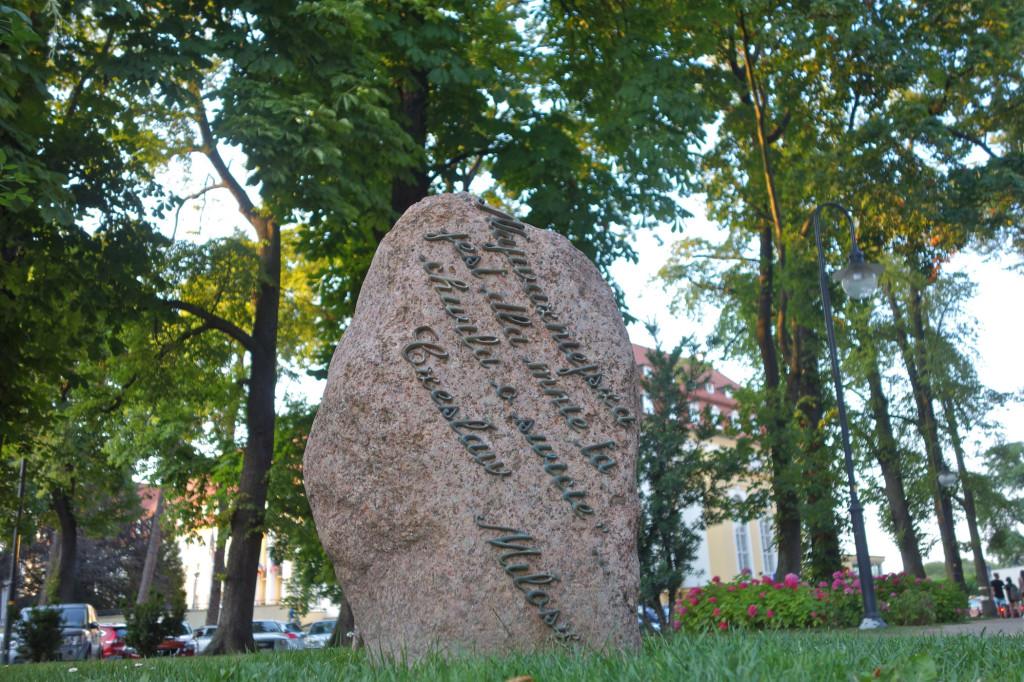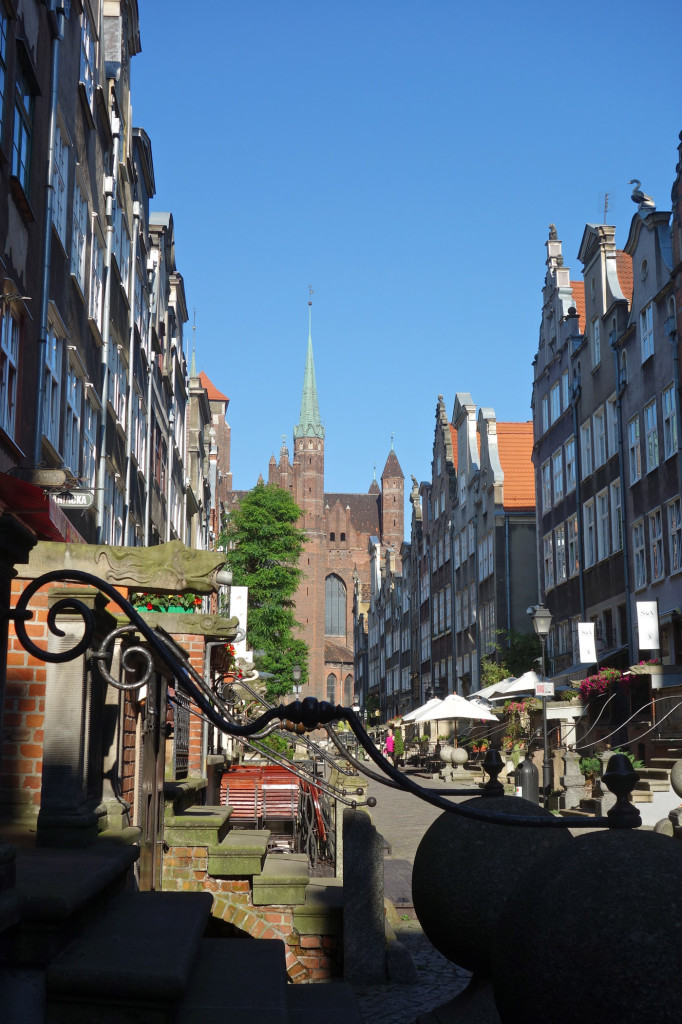The Book Haven’s roving photojournalist Zygmunt Malinowski was far, far away from his New York City digs last month, and back in his native land – in particular, he visited Gdańsk. I didn’t remember how strongly the Baltic port is linked with Czesław Miłosz. Fortunately, Zygmunt did, and he took plenty of photos, with Gdańsk writer Stefan Chwin and Krystyna Chwin‘s book, Czesław Miłosz: Gdańsk and Vicinity, as a guide.
He writes: “I was invited for the opening of European Solidarity Center on August 30 – an imposing newly built museum dedicated to preserving the history of Solidarity, as well as an international institution ‘to ensure the ideals of Solidarność – democracy, an open solidarity society, and culture of dialogue – maintain a modern perspective and appeal.’ It is situated close to the Monument to the Fallen Shipyard Workers where Miłosz’s poem, ‘The Poet Remembers’ is engraved in bronze.”
The lines on the monument at right (the whole poem, “You Who Wronged,” is worth a read here): “Do not feel safe. The poet remembers./You can kill one, but another is born./The words are written down, the deed, the date.”
He is one of three people represented on the Solidarity monument, along with Nobel peace laureate Lech Wałęsa and Pope John Paul II. Miłosz visited Gdańsk the year after his 1980 Nobel to meet with Wałęsa. The Solidarity movement was in full swing, and the exiled Polish poet, returning to his homeland for the first time in three decades, was greeted enthusiastically by crowds of shipyard workers. He would come again in subsequent years (other than the years of martial law, which was imposed in 1984 and lifted in 1989), returning both as a private person and a public figure. He made a permanent return to Poland in 2000. Each visit was closely followed by local and international press.
Gdańsk had sad memories for Miłosz, too, as well as happy ones: His family, including cousins as well as parents and brother were displaced by the ravages of World War II, and moved into a house in nearby Sopot. His mother Weronika Kunat Miłosz died in the nearby village of Drewnica, during a wartime typhus epidemic in 1945; she is buried in the nearby Sopot Catholic Cemetery.
“Gdańsk and Sopot, a resort town, both situated on the Baltic Sea, provide a festive atmosphere for visitors and tourists during the summer who admire its unique architecture and relax in its many friendly cafes and restaurants, entertained by street musicians and performers,” Zygmunt wrote. “Gdańsk University, School of Fine Arts, and Academy of Music add to a sense of culture.”
“During his visits in the 1980s and 1990s, Miłosz gave several poetry readings, met with readers and students, was hosted by city officials, and gave press interviews. He stayed in the majestic Grand Hotel in Sopot overlooking Baltic Sea, and Hanza Hotel by river Motlawa in Gdańsk. He visited his cousins and the family grave where his mother is buried. While in the Pod Holendrem café on Mariacka Street, considered to be one of the most beautiful with elaborately carved portals, street musicians fêted him with a song for his 85th birthday [that would be 1996 – ED]. In Sopot, he was hosted at City Hall and town officials named one of the city’s green spaces in his honor.”
There’s some good news for Zygmunt in all of this, too: “My photographs of the New York demonstrations supporting Solidarity were acquired by the European Solidarity Center for their archives. Some are being used in the museum multimedia presentation, and one was even chosen to be reproduced in large format for the permanent exhibition. Concurrent with the the center opening in Gdańsk, Sabine Weier, a known curator based in Berlin, included some of my photos in a collection for an online exhibition titled ‘Strajk.'” We’ll include the link when we have it.
More photos below. Thanks and congratulations, Zygmunt! (All photos copyright Zygmunt Malinowski.)

Stone marker on Czesław Miłosz Square with his words: “For me, the most important moment is at dusk”

The former Miłosz family home during WWII on 23 Wibicki Street in Sopot. The house seems recently renovated.
Tags: Czeslaw Milosz, Zygmunt Malinowski








December 10th, 2014 at 2:32 am
I’d like to add one more item to the list. The 50 feet high mural by Rafal Roskowinski in Zaspa, painted during “the Year of Milosz” in 2011. it pictures Czeslaw Milosz during his visit to the Shipyard in 1981, looking up at the Monument of the Fallen Workers, standing next to Lech Walesa. See http://muralegdanskzaspa.pl/kolekcja/milosz-na-blokowisku-roskowinski-wozniak/
December 10th, 2014 at 8:55 am
Thanks, Jarek!